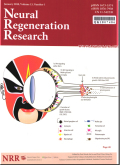N-methyl-D-aspartate receptor expression in the spinal dorsal horn of a rat model of formalin-induced inflammatory pain following intrathecal injection of butorphanol
摘要Clinical and animal experiments have proved that intrathecal injection of butorphanol has an analgesic effect. However, whether the analgesic effect is associated with activation of the N-methyl-D-aspartate (NMDA) receptor remains unclear. This study presumed that intrathecal injection of butorphanol has an analgesic effect on formalin-induced inflammatory pain in rats, and its analgesic effect is associated with inhibition of NMDA receptors. Concurrently, ketamine was injected into the intrathecal space, which is a non-competitive NMDA receptor antagonist, to determine the analgesic mechanism of butorphanol. The total reflection time in phase 1 and phase 2 of rat hind paws carding action was reduced when the butorphanol dose was increased to 25 μg,or a low dose of butorphanol was combined with ketamine. Intrathecal injection of a high dose of butorphanol alone or a Iow dose of butorphanol combined with ketamine can remarkably reduce NMDA receptor expression in the L5 spinal dorsal horn of formalin-induced pain rats. The results suggest that intrathecal injection of butorphanol has analgesic effects on formalin-induced inflammatory pain, and remarkably reduces NMDA receptor expression in the rat spinal dorsal horn.Ketamine strengthens this analgesic effect. The analgesic mechanism of intrathecal injection of butorphanol is associated with inhibition of NMDA receptor activation.
更多相关知识
- 浏览170
- 被引1
- 下载0


相似文献
- 中文期刊
- 外文期刊
- 学位论文
- 会议论文



 换一批
换一批 换一批
换一批



